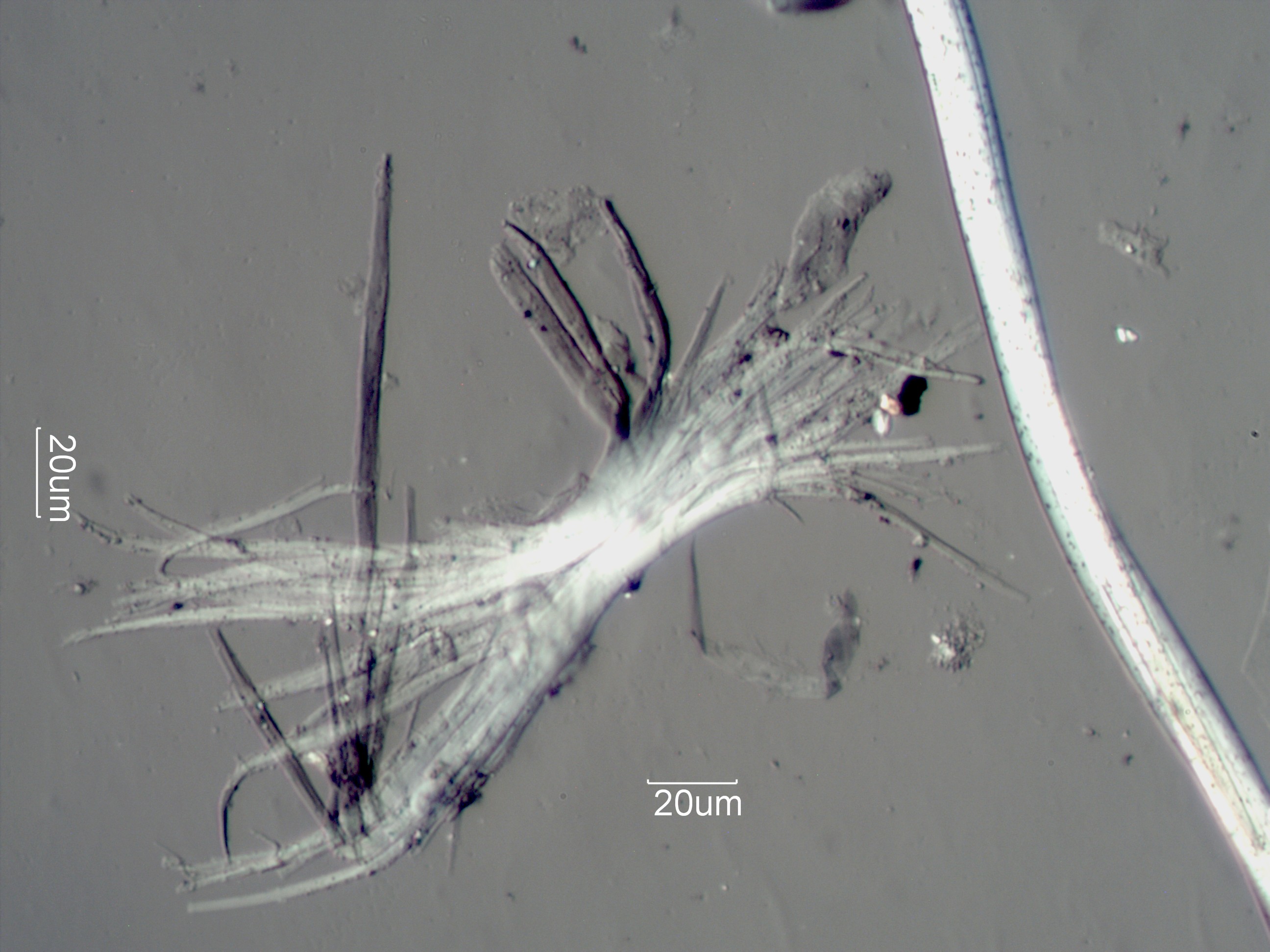Transmitted Oblique Off-Crossed Circular Polarized Light Illumination
Definition/Function:
Mammalian hair is composed of a protein, keratin. It is the same protein that makes
horn, fingernails, claws, skin epithelium, and dander.
Mammalian hair consists of three distinct morphological units, the cuticle, the
cortex and the medulla. The distinctive pattern shown by these
units varies over the length of the hair in a way that can be very characteristic.
The patterns exhibited by these units
in any given hair are often sufficient to identify the genus, the species, or even
the individual that the hair came from.
Significance in the Environment:
Human hair tends to be repeatedly and often exposed to harsh chemical treatments,
including washing with soap and water. The cuticle is affected
by these treatments and breaks down, no longer maintaining the integrety of the hair.
Split ends are the result. Split ends are very common
in human hair and relatively rare in hair from other animals.
Characteristic Features:
Associated Particles:
References:
References with Photographs and/or Drawings
Hausman, Leon Augustus, "Structural charactreistics of the hair of mammals", THE
AMERICAN NATURALIST, vol. 54, no. 635, pp.496-523,
Hausman, Leon Augustus, "Recent studies of hair structure relationships", THE SCIENTIFIC
MONTHLY, pp. 258-277,
Glaister, John, A STUDY OF HAIRS AND WOOLS, Misr Press, Cairo, 1931.
FBI site for Animal Hair Identification:
http://www.fbi.gov/hq/lab/fsc/backissu/july2004/research/2004_03_research02.htm
Keys Only
Mayer, William V., "The hair of California mammals with keys to the dorsal guard hairs
of California mammals", THE AMERICAN MIDLAND NATURALIST,
vol. 48, no. 2, pp. 480-512, 1952.
Stains, Howard J., "Field key to guard hair of middle western furbearers", JOURNAL OF
WILDLIFE MANAGEMENT, vol. 22, no.1, pp. 95-97, January, 1958.
Mathiak, Harold A., "A key to hairs of the mammals of southern Michigan", JOURNAL OF
WILDLIFE MANAGEMENT, vol. 2, no. 4, pp. 251-268, October, 1938.


